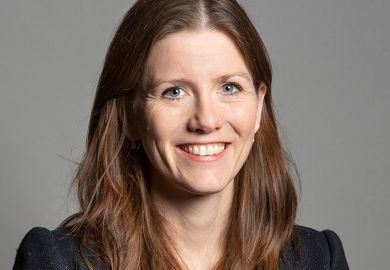As the Westminster government’s review of English post-18 education grinds towards its final, final conclusion with an aim to counteract the divide between higher and further education, some universities and colleges have moved ahead of national policy (not that difficult: the Augar review has been going since January 2018).
By adopting different models to bridge that divide from the ground up, new partnerships are potentially moving towards more unified tertiary education systems tailored to local needs.
Notably, Greater Manchester’s five universities and nine colleges announced this month a partnership aimed at creating “a distinctive, world-leading and locally relevant further and higher education ecosystem” for the region, involving working with employers and the Greater Manchester Combined Authority to identify skills gaps, plus making it much easier for students to transfer between institutions.
“It’s partly driven by the national agenda of levelling up, but it’s very much driven by our feeling that we could contribute more to the regional skills agenda,” said Dame Nancy Rothwell, the University of Manchester vice-chancellor.
Referencing the University of California’s system of student progression between institutions, she continued: “My ideal goal would be that a 16-year-old can choose to go to an FE college and then decide to go to any one of the Greater Manchester universities, or indeed possibly even transition between them.”
Richard Jones, the Manchester professor and influential innovation theorist, now independent science adviser to the new Innovation Greater Manchester, has argued that “left-behind places” need more innovation to create a demand for skills – while there must be a joined-up FE-HE sector in the region to supply those skills.
The new partnership was “very closely linked to Innovation Greater Manchester”, Dame Nancy said.
It will have to look at the skills start-ups need, but also at the “quite fundamental business management, accounting, digital skills [needs] in some of the small companies” that form “a significant part of the productivity gap we have in the UK”, she added. “How could FE and HE providers help to deliver that?”
Lisa O’Loughlin, principal at the Manchester College, said that colleges were “very experienced in working with communities that are the focus of levelling up and where there is low participation in skills…certainly higher-level skills”, while the region’s universities have “some fantastic employer partnerships and a real understanding of the power of research and how we approach these strategic challenges”.
“There is a lot to be learned from each other,” she added.
The Greater Manchester plan followed the announcement in January of a Sheffield City Regional Post-18 Education Partnership – including Sheffield Hallam University, the University of Sheffield, five colleges and local business leaders – focusing on “skills shortages, education progression routes, apprenticeship opportunities, outreach work with hard-to-reach communities and delivering lifelong learning”.
Meanwhile, the University of Warwick and University College Birmingham, a vocational higher and further education institution, were expected to soon announce a new partnership, pending final approval, to include pathways for apprentices and support for mature students.
And in 2019, Lambeth College became part of the London South Bank University (LSBU) Group, which also includes an 11-19 academy school, a 14-19 university technical college and soon the £100 million new London South Bank Technical College.
The decision to form a group was driven by a realisation that “one institution can’t deliver everything” required by the local community and employers, said David Phoenix, LSBU’s vice-chancellor. A group structure allows institutions to specialise, but under a single strategy and mission – one that is “place based” for South London – without losing the focus on further education that happens in some mergers with universities, he added.
The structure also creates different learning pathways for students according to whether they see their strengths in classroom-based, more applied or non-classroom learning, aiming to “empower the individual and give them choice rather than putting people in a position where they are made to feel a failure”, Professor Phoenix said. The aim was to “get an equity across the different forms of education”, he added.
Andy Westwood, professor of government practice at Manchester and a former skills adviser in the Labour government, saw several drivers behind such realignments: Augar and Department for Education policy; the civic agenda championed in higher education by the UPP Foundation’s Civic University Commission; devolution to regional mayors and combined authorities bringing “a wide range of new city region thinking” on issues such as local industrial strategies and inequalities; plus the “Brexit and levelling-up agendas” bringing home the political importance of the disconnection from wealth and opportunity felt in many places.
Professor Westwood added that “a lot can be done regionally and locally in bringing institutions together into a collective partnership”, against a backdrop of the still “utterly disjointed national policy landscape across FE, HE, [and] apprenticeships, with different regulators, funding systems and virtually no coherence across the tertiary landscape”.
POSTSCRIPT:
Print headline: Local partnerships bridge HE-FE divide
Register to continue
Why register?
- Registration is free and only takes a moment
- Once registered, you can read 3 articles a month
- Sign up for our newsletter
Subscribe
Or subscribe for unlimited access to:
- Unlimited access to news, views, insights & reviews
- Digital editions
- Digital access to THE’s university and college rankings analysis
Already registered or a current subscriber? Login








